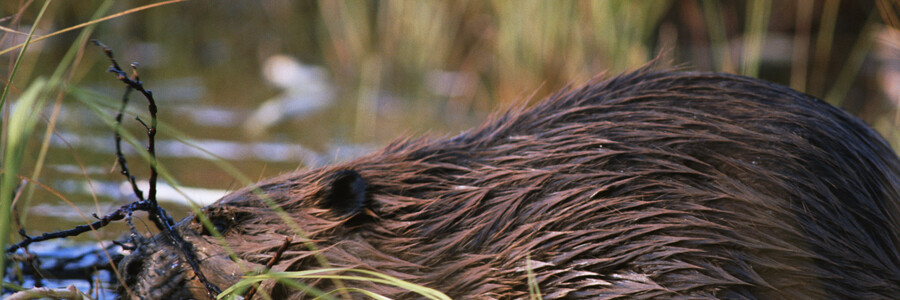Basic data: Beaver project near Oberzell
The wet fallow, a watery and unused grassland
A wet fallow is a piece of wet land, or a damp field that was previously mowed quite regularly which cannot be used any more. Instead of grass, clover or crops wild plants grow undisturbed which were previously treated as weeds.
A few examples of which are: Water Avens, saxifrage or meadowsweet, a favourite food of the beaver. At first on a wet fallow mainly shrubs grow, later bushes and eventually the first pioneer tree species, such as willow. Over time, a riparian forest appears.
The beaver's pantry
Wet fallows with their variety of characteristics are ideal feeding grounds for beavers. In the early stages of the fallow, mainly tall forbs like meadowsweet, stinging nettles and various types of sorrel appear. From spring to autumn these are like a banquet for the beaver. Over years, the first willow bushes also appear. These provide food for the beaver during the winter months.
New habitats for many species
With its eating habits and dam building the beaver slows down the process with which a riparian forest comes into being, and therefore keeps the wet fallow open for a longer time. This is how they create habitats for different kinds of butterflies such as the Sooty Copper, Small Pearl-bordered Fritillary or the Mazarine Blue.
Only a few tree species can cope with the wet soil which surrounds the beaver's dams. Only tree species that can cope easily with wet roots and grow in soft wood or hard wood meadows assert themselves. These include, for example willow, alder and ash, many of which are on the menu of the beaver.
Machen Sie mit und helfen Sie uns, mehr Land für die Natur zu kaufen!

